How To Create An Irresistible Culture That Your Toxic People Will Hate
What’s impacting your campus performance more than you think?
Your culture.
Specifically, the culture you’re creating as a leader.
If you have been in your leadership seat for three years or more and are not in love with your campus culture… Look in the mirror.
Leaders create (and allow) culture.
In weekly table conversations, I hear campus leaders grumble about the growing number of toxic people they have who are negatively impacting their system.

If you can relate to this reality, let me ask you a question. Is your problem the people or your system?
Here’s the truth about systems. They are built by teams, and systems drive the overall health of your culture.
Healthy teams build healthy systems.
Healthy systems build irresistible culture.
Create an irresistibly healthy culture, and your toxic people will leave.
Let your culture go flat or get toxic, and your high-capacity and healthy people will depart.
Why?
Because:
➜ A healthy culture spits out toxic people.
➜ A toxic culture spits out healthy people.
Here’s the surprise. No one gets kicked out. They just leave when they feel they no longer belong.
If your value of inclusion includes toxic people, I don’t think your best days are ahead.
This truth runs more profound than you realize.
A raft of research agrees that people who leave their jobs quit their boss more than they quit their organization.
But remember that underperforming bosses create bad cultures.
People also quit culture.
Healthy people quit unhealthy cultures. And unhealthy people quit healthy cultures.
As a result, the overall culture you create as a leader has an awful lot to do with your organization's long-term success or failure.
You either create a campus culture in which healthy people thrive, or you experience the inevitable slide into accidental leadership that brews average teams who fall victim to average performance.
That’s just how human nature works, and great leaders must resist that gravitational pull at all costs.
I was asked recently by a school leader what I thought the difference is between an unhealthy person and a toxic person. While there are nuances, here’s the bottom line and my response to him:
Unhealthy people want to grow. Toxic people don’t.
Your organization should always have room for unhealthy people on the road to recovery. You must contain them, care for them, and challenge them to become healthy.
Toxic people who resist all efforts to help are a whole other thing. And as Henry Cloud argues, you don’t need to keep them around, unless you want them to destroy everything.
So, what do you do about all this?
If you want to create a stellar organizational culture that attracts and keeps healthy people, here are four keys:
1. Focus on Your Personal Health
I have been a senior leader for nearly three decades. As much as I don’t want to admit it, it’s still true: During those 28 years leading within the system, my organization was only as healthy as I was.
Full stop.
Ditto for you. Fight it all you want, but your organization will only be as healthy as you are as the leader.
Don’t be offended, but if your system is not healthy… Tag you are it.
Even if you’re not the senior leader, that’s true of the team you lead, the department you run, or the crew you manage. The health of the leader tends to be the health of the team.
I think of the health of a leader in five categories:
✅ Spiritual
✅ Emotional
✅ Relational
✅ Physical
✅ Financial
While health in each category is nuanced, one thing is true: health in each category means margin.
A healthy leader has a spiritual, emotional, relational, and physical tank that is more full than empty. They have the benefit of not being exhausted all the time, not constantly irritable, or not so over-consumed with the needs of others.
This is the gift of margin.
You may wonder what being financially healthy looks like. It’s simple: Living within your means and using the leftovers for the benefit of others.
I know leaders who make $40,000 a year who have a bit of money in the bank and leaders who make $140,000 who are always strapped and out of money. When your financial situation causes stress, that toxin leaks out all over the place.
Healthy leaders tend to lead healthy organizations because they have the reserves to help others get healthy and have a lower tolerance for toxicity.
Finally, healthy people are attracted to healthy leaders.
That👆🏼might be the solution to your talent recruitment challenge.
2. Invest in People, Not Just Results
I’m naturally a results person.
But I’ve also come to realize this: Results-driven leaders focus on what they can get FROM their team. Healthy leaders obsess over what they can do FOR their team.
Strangely, if all you think about is what you can get from your team, you always end up with diminishing returns. People feel used and eventually lose heart, start going through the motions, and become underperformers.
But if you focus on what you can do FOR your team, people lean in and give you much more than you imagined.
The longer I guide and coach others, the more I realize that if you have competent people, the best thing you can do is care about the team as humans.
I’ve observed a few practical strategies that help immensely that you can start today:
➜ Ask team members HOW they’re doing, not just WHAT they’re doing. People want to know that you care.
➜ Invest in your leader’s growth and development.
➜ Do off-sites together. Invest in team retreats, conferences, events, and seminars.
➜ Invest in courses, books, and resources that grow your people and their skill sets.
➜ Invest in personal coaching and consulting support for your leaders and divisional teams.
➜ Give your leaders what they need to do their job well. Everything from slow computers and lousy WiFi to a crappy work environment demotivates people and creates unnecessary barriers.
Cheap is always more expensive in the long run, right?
Bottom line? Create the kind of environment where the people working for you become better PEOPLE, not just employees. Grow THEM, not just their skills.
When your team grows personally, your progress grows exponentially.
RECLAIM IT!
As we move into the midpoint of summer, you can almost hear that collective “what-the…” from campus leaders across the country.
“Isn’t July supposed to be when things slow up?”
Most feel that.
The challenges left in the wake of these past two years have many leaders taking extended leave, and others left to do most of the work.
The question is, “is it sustainable?”
I know how much this summer break is needed, and I trust that your calendar has some dates marked off for you to truly get away.
But don’t be fooled.
I’m here to remind you that many of those same problems and issues will await you and your team when you return in the fall.
Leaders hate when I say this (while they shake their heads in agreement), but managing crisis was challenging but leading OUT of crisis will be much more complex and demanding.
Healthy leaders and teams will be in high demand to build (not rebuild) the plans and strategies to navigate the unchartered territory ahead.
You need to take action and Reclaim Your Momentum!
You may be one of the hundreds who requested and downloaded my free guide on reclaiming your momentum in the past few weeks and months. The feedback I’ve received from so many of you continues to be overwhelming.
Because of that, I’m going on tour.
I’ve turned this essential topic into a 2-hour LIVE keynote that I’m delivering to campus leadership teams across the county this summer and fall.
If you’re like most campus leaders, you’ve spent countless hours these past years putting out fires, dealing with negativity, drama, and just plain old burnout across the board.
And, like so many others, you’re fed up with feeling stuck.
It’s time to take action.
For a limited time, I’m offering an Early Bird Discount for campuses that book our new 2-hour live keynote before July 30th!
What are you waiting for?
It would be an honor to be your guide and help you and your team regain lost ground and Reclaim Your Momentum.
Joe
Dr. Joe Hill
Founder, Higher Performance Group
P.S. Be sure to share this article with a team member or fellow leaders across your network who could use a nudge of inspiration and challenge. Together we can help raise the waterline of hope, stability, trust, and compassion for those doing the most good across our learning communities.
More Blog Articles



